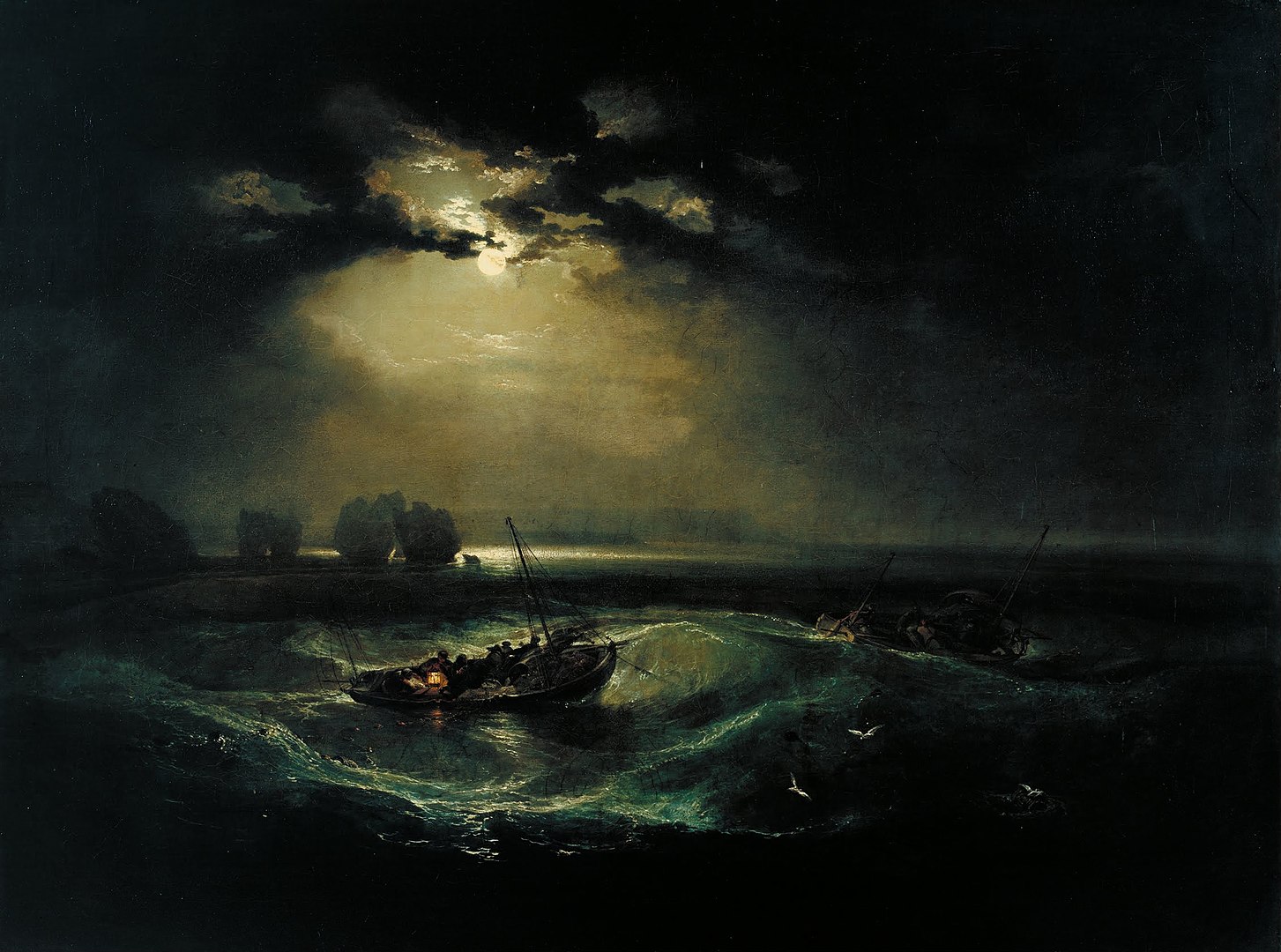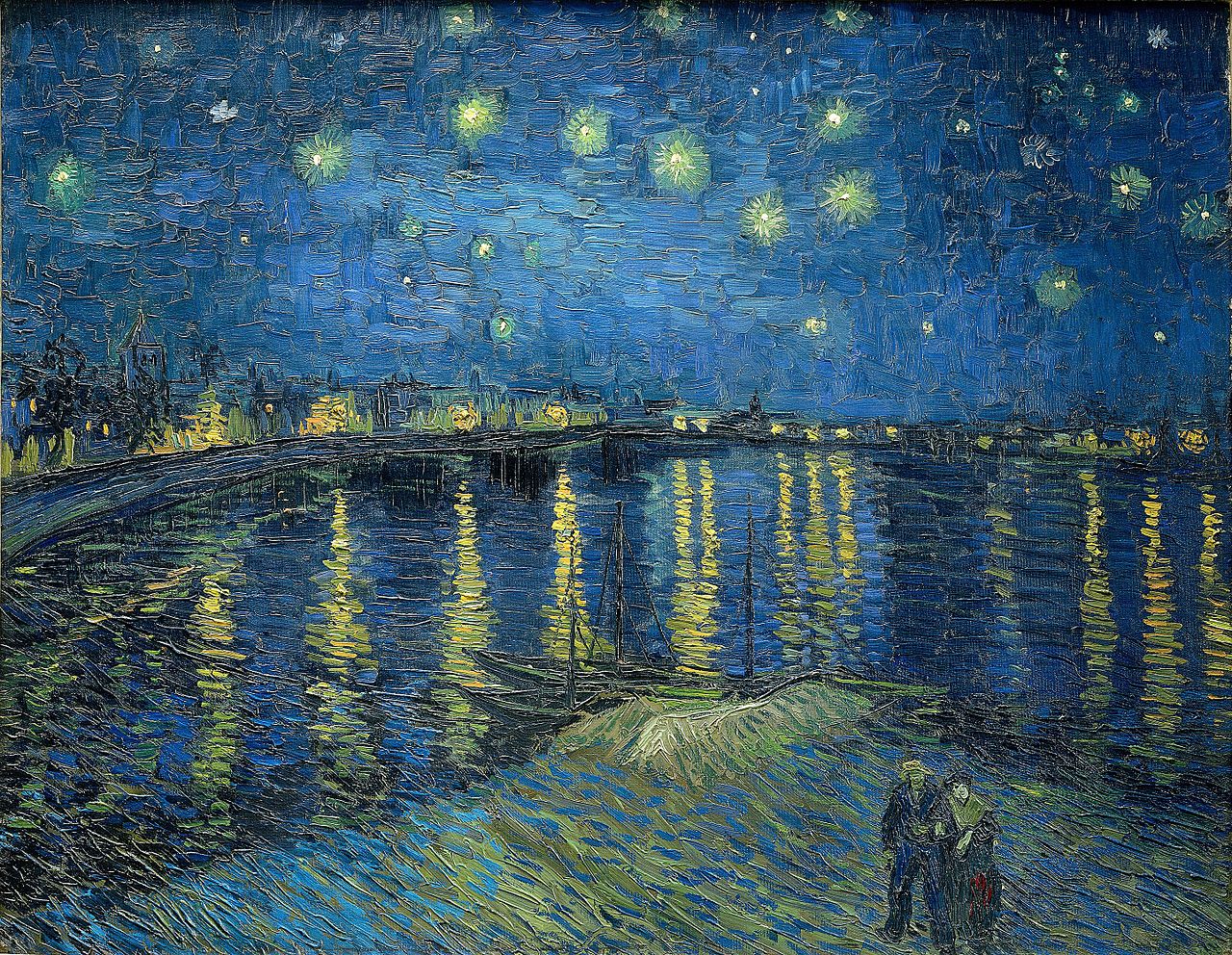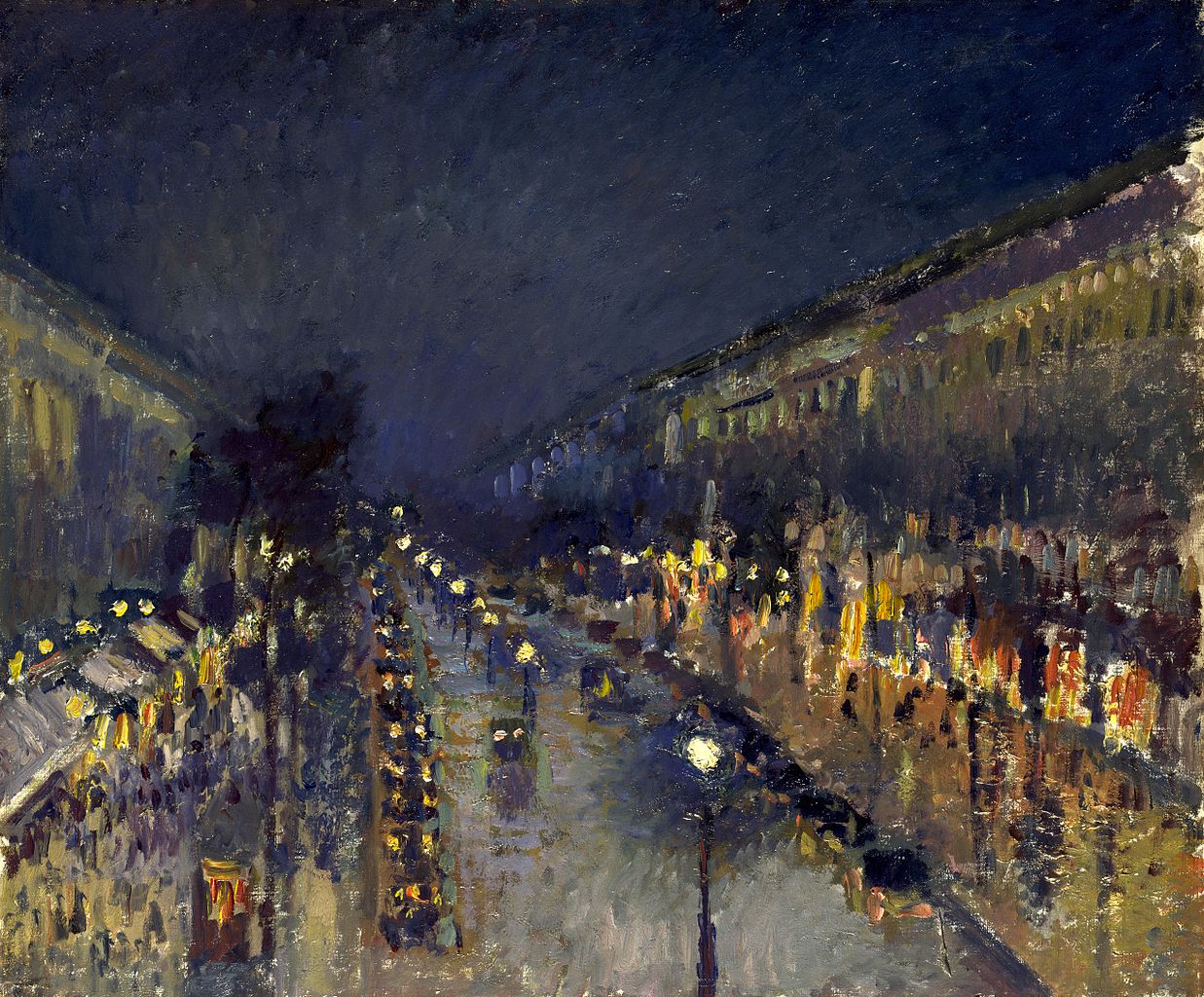4 European Events Harmonizing Art, Nature, and Techno Music
Techno and electronic music have always shared an intimate relationship with art, intertwining rhythms, beats, and melodies with visual expressions...
Celia Leiva Otto 30 May 2024
Few things in life are more moving than the night sky on a cloudless evening. Artists have been fascinated by it for so long! The night has inspired many creative minds to dive into the unknown and explore the depths of our mysterious universe. Here is the night sky depicted in 10 paintings you can’t miss.

The Flight into Egypt is one of the first naturalistic depictions of the night sky in a Renaissance painting. Despite breaking a few “art traditions” from that period, it influenced many painters in their artistic pursuits, such as the Dutch masters Rembrandt and Rubens. The painting portrays the biblical story, in which Joseph, Mary, and Jesus run from the frightening King Herod into Egypt. Several light sources – the moon and stars reflected in the lake, the fire near the shepherds, and the torch in Joseph’s hand – illuminate the dark scenery. Elsheimer is the first painter to accurately depict the constellations, such as Ursa Major. The diagonal across the night sky is the Milky Way. Unlike other artists, Elsheimer used subtle religious symbolism, and while most depictions of this scene are portrayed during the day, he decided to respect the biblical description.
Adam Elsheimer (1578-1610) was a German Baroque artist located in Rome. Most of his artworks were very small and painted on copper plates. After an inventory, it was discovered that The Flight into Egypt was in his bedroom at the time of his death.






The artist divided the picture into two contrasting halves: the explosive eruption of Mount Vesuvius and the quiet cold sea. All hell breaks loose above the tiny insignificant men in the foreground; two of them are carrying a lifeless body, and a third is weeping. Surrounded by dark clouds of smoke, fire and red hot lava splash violently upwards into the night sky depicted masterfully on the painting. The shielded moon watches silently over the aggressive eruption. Contrary to the inferno on the left, a predominantly cold color palette on the right side of the tableau highlights the tranquility of the waveless sea.
Joseph Wright of Derby (1734-1797) was an English painter acclaimed for his portraits and landscapes. With hopes to witness the eruption of Mount Vesuvius, Wright visited Naples for a couple of months in 1774. Because he included the islands of Ischia and Procida in the picture, which are not visible in reality, this painting most likely was created after he arrived in England with the help of studies and sketches made on the spot.






In 1796, the Royal Academy exhibited Turner’s first oil painting, Fishermen at Sea – he was only 21 years old at the time. Artists such as Philip de Loutherbourg and Joseph Wright of Derby, famous for their nocturnal or maritime paintings, inspired Turner to create this moonlit seascape.
As a potent display of nature, the painting juxtaposes the vulnerability of humankind and the treacherous waves. Near the perilous rocks known as the Needles of the Isle of Wight, a group of fishermen in small boats are in danger at sea; the warm light of their lamp is puny against the vast darkness and cold moonlight. The threatening night sky is covered in black clouds, creating a tense atmosphere. Patches of electric turquoise shimmer on the devastating, pitch-black water.
Well known for his expressive landscapes and maritime scenes, J. M. W. Turner (1775-1851) is regarded as one of the most important English Romantic painters.






Witches’ Sabbath is a representation of the Devil, depicted as a black goat, and a group of witches, young and old, praising him. The animal has impressive horns and wears a garland of oak leaves. An old crone dressed in black holds a starving infant in her hands. Next to her, a young girl keeps her healthy baby close to her chest. The body of a dead infant lays discarded in the foreground. In popular superstition, at the time, it was thought that the Devil fed on human children. Shimmering stars cover the night sky; the wicked scene takes place in a deserted setting. Symbols associated with witchcraft can be spotted across the canvas: the crescent moon, bats flying in the distance, and the goat extending its left hoof to the child rather than the right one.
Considered the most important Spanish artist of the late 18th and early 19th centuries, Francisco Goya (1746-1828) was a Romantic painter and printmaker. As one of the last Old Masters and earliest Modernist artists, he inspired many painters from the 19th and 20th centuries, for instance, the great Eugène Delacroix (1798-1863).
Later in his life, Goya also painted the Black Paintings, a group of 14 artworks that adopted dark, fearful themes. Throughout his life, the artist suffered from two near-fatal illnesses and struggled with intense anxiety. Although Goya never titled his paintings, art historians took it upon themselves to name them. This series includes Saturn Devouring His Son (1819-1823), Witches’ Sabbath (1821-1823), and A Pilgrimage to San Isidro (1819-1823).






This painting’s bold depiction of the night sky created a lot of controversies. The painting captures a suggestive display of fireworks besides a bridge over the River Thames in London at the Cremorne Gardens. After seeing the artwork at the Grosvenor Gallery, the art critic John Ruskin wrote a devastating review, portraying Whistler as an uneducated, lazy artist. Whistler sued him for libel. The painter won the trial, but as a consequence, his reputation suffered amongst his older collectors. He published a fragment of the trial in his book titled The Gentle Art of Making Enemies that tackled the biases in art in the late 19th century.
The artist used a series of muted tones for this painting: blue, green, and gray. For the fireworks, he splattered across the canvas powerful droplets of yellow. The mystical night sky is shrouded in a delightful veil of fog and smoke. Barely noticeable, transparent humanoid figures are admiring from below the nocturnal show. Less interested in the narrative behind his subject, Whistler wished to capture a delicate, emotional moment. Nocturne in Black and Gold – The Falling Rocket inspired many artists after Whistler’s death to adopt a more abstract approach to painting.
James Whistler (1834-1904) was an American artist, based in the UK, and an adept of the “art for art’s sake” initiative from the 19th century. You might recognize his famous painting, Arrangement in Grey and Black No. 1 (1871), a true American icon in the art world.






It’s impossible to talk about the night sky in paintings without mentioning Van Gogh! One of the most influential artists of all time, Vincent van Gogh (1853-1890) was a Post-Impressionist painter born in the Netherlands. Eventually, he moved to France, where he further developed his distinctive painting manner.
Van Gogh painted Starry Night Over the Rhone during his stay in Arles. He is known for his bold palette of expressive colors present in all of his significant works. Yellow stars twinkle gently across the vast night sky. Reflections from the gas lights dance on the blue River Rhone. The chromatic contrast reveals the difference in temperature between the heat of the light and the chilly water. The artist uses energetic brushstrokes to depict the intimate moment. In the foreground, two lovers promenade along the waterfront.
Van Gogh wrote in a letter to his sister in September 1888:
Often it seems to me that the night is even more richly colored than the day.
A year later, he painted his other famous Starry Night with cypresses in a mental health facility near Saint-Rémy-de-Provence.






Although summer is officially over, it’s hard to say goodbye without Sohlberg’s Summer Night. This effervescent painting captures the essence of the bright Nordic summer nights in vivid tones of blue. The beauty of nature prevails over all other elements, instilling a sense of tranquility and peace over the atmospheric landscape.
A table set for time, half-empty glasses of wine, and what a romantic scenery! People aren’t a part of the ensemble, but a reminder of their earlier presence on the balcony persists in the painting. Naturally, the viewer is drawn towards the luminous night sky in the painting. The artist plays with color to emphasize the difference between the richly detailed foreground and vaguely enigmatic background inhabited by dark forms.
Harald Sohlberg (1869-1935) was a Norwegian painter. He created this artwork full of love and joy to commemorate his recent engagement. During this time, Sohlberg lived in an apartment from where he could admire the islets in the inner Kristianiafjord and the hills of Bærum.






In this splendid urban nightscape, Pissarro depicts the essence of busy Parisian life in cafés, restaurants, and the embracing night sky. The gleaming wet pavement reflects the city’s nighttime brightness and animates the whole composition with dynamism. Reds and oranges shine on the dark velvety background, while the spacious street with wide sidewalks enriches the painting, creating a diagonal for the eye to follow. The architecture can only benefit from such an enthusiastic display of street lights.
Camille Pissarro (1830-1903) was a Danish-French painter known for his remarkable contribution to Impressionism and Post-Impressionism. His work has inspired artists such as Paul Gauguin, Georges Seurat, and Paul Cézanne.
Compared to his other paintings from this series, The Boulevard Montmartre at Night resembles more of an oil sketch than a finished oeuvre. He painted the Montmartre Boulevard series towards the end of his life; other artworks include Boulevard Montmartre: Afternoon, Sunshine (1897), The Boulevard Montmartre on a Winter Morning (1897), and Boulevard Montmartre on a Spring (1897).
It’s easy to mistake the cactus in the foreground for a human being. Those familiar with Amaral’s work may recognize her style. In this moonlit scene, the artist uses her specific outlining technique to depict this outstanding landscape. The radiant crescent moon stands out from the rest of the nocturnal composition. From the elliptical stream of water to the night sky, fluidity and movement are present everywhere throughout the painting.
Known as a groundbreaking Brazilian painter, Tarsila do Amaral (1886-1973) is considered to be one of the leading Latin American Modernist artists. She was a member of the famous Brazilian Modernist Grupo dos Cinco associated with Anita Malfatti, Menotti del Picchi, Oswald Andrade, and Maria de Andrade.
.jpg)
.jpg)
.jpg)
.jpg)
.jpg)
.jpg)
René Magritte (1898-1967) was a Belgian artist known for his Surrealist paintings. His works adopted unusual themes and symbols – the apple, the window, the bowler hat – which challenged the viewer’s perception of reality. You might recognize his other masterpieces, such as The Son of Man (1964) and Golconda (1953).
In an unclear outdoor setting, three seemingly identical men stand next to each other, gazing in different directions. This painting raises many philosophical questions. Three crescent moons hang above their heads in the night sky. Are the men aware of their surroundings, or do they live in their separate universes, undisturbed by the rest? One interpretation is that the figures have no personality, devoid of any authenticity and uniqueness. Similar gentlemen wearing bowler hats are very common in Magritte’s work. Melancholy reigns over the peculiar characters.
This piece reflects on the sentiments of aloofness, alienation, and isolation in a world of almost permanent “togetherness”. Magritte chose a somewhat restricted color palette for this artwork. Tones of indigo and blue cover the quiet night sky.
DailyArt Magazine needs your support. Every contribution, however big or small, is very valuable for our future. Thanks to it, we will be able to sustain and grow the Magazine. Thank you for your help!